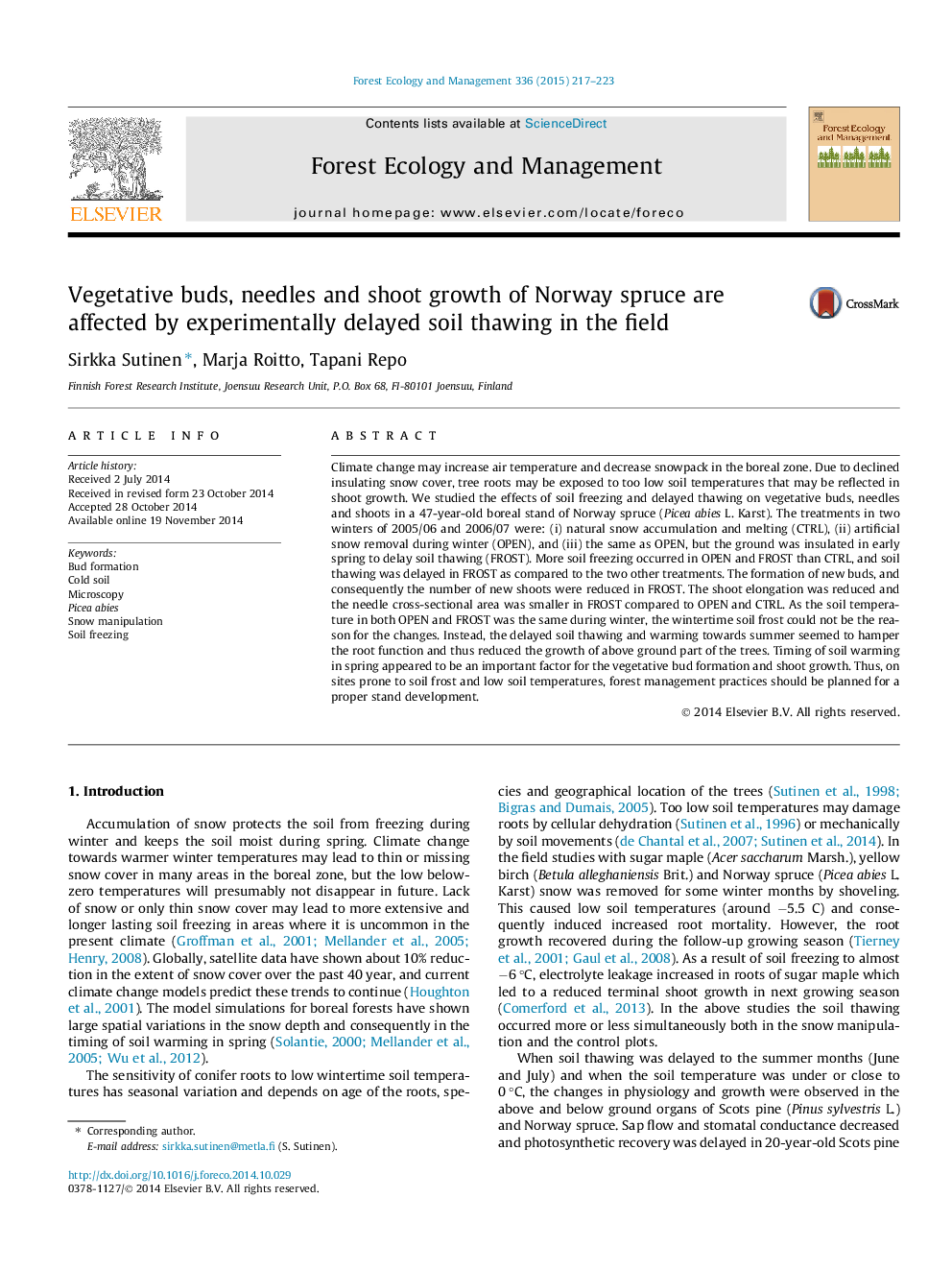| Article ID | Journal | Published Year | Pages | File Type |
|---|---|---|---|---|
| 86433 | Forest Ecology and Management | 2015 | 7 Pages |
•We studied the buds and shoots of Norway spruce in relation to delayed soil thawing.•Formation of buds and number of new shoots were reduced.•Shoot elongation was reduced.•Timely soil warming in spring is crucial to bud formation and shoot growth.
Climate change may increase air temperature and decrease snowpack in the boreal zone. Due to declined insulating snow cover, tree roots may be exposed to too low soil temperatures that may be reflected in shoot growth. We studied the effects of soil freezing and delayed thawing on vegetative buds, needles and shoots in a 47-year-old boreal stand of Norway spruce (Picea abies L. Karst). The treatments in two winters of 2005/06 and 2006/07 were: (i) natural snow accumulation and melting (CTRL), (ii) artificial snow removal during winter (OPEN), and (iii) the same as OPEN, but the ground was insulated in early spring to delay soil thawing (FROST). More soil freezing occurred in OPEN and FROST than CTRL, and soil thawing was delayed in FROST as compared to the two other treatments. The formation of new buds, and consequently the number of new shoots were reduced in FROST. The shoot elongation was reduced and the needle cross-sectional area was smaller in FROST compared to OPEN and CTRL. As the soil temperature in both OPEN and FROST was the same during winter, the wintertime soil frost could not be the reason for the changes. Instead, the delayed soil thawing and warming towards summer seemed to hamper the root function and thus reduced the growth of above ground part of the trees. Timing of soil warming in spring appeared to be an important factor for the vegetative bud formation and shoot growth. Thus, on sites prone to soil frost and low soil temperatures, forest management practices should be planned for a proper stand development.
